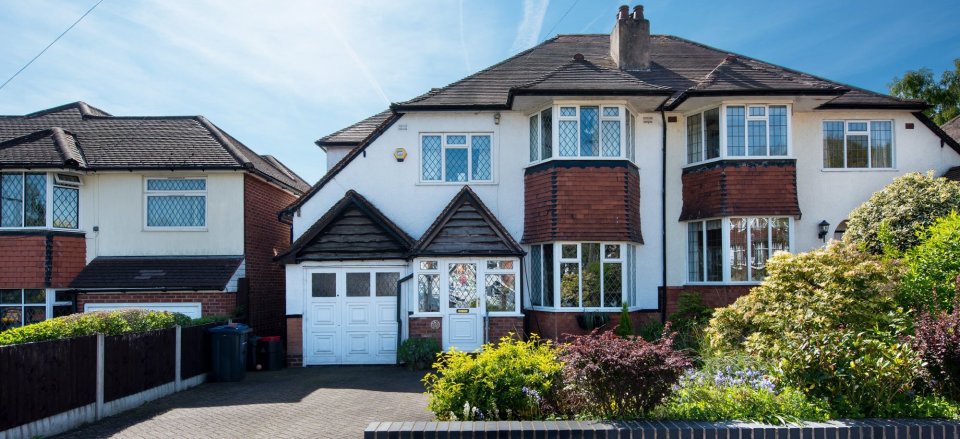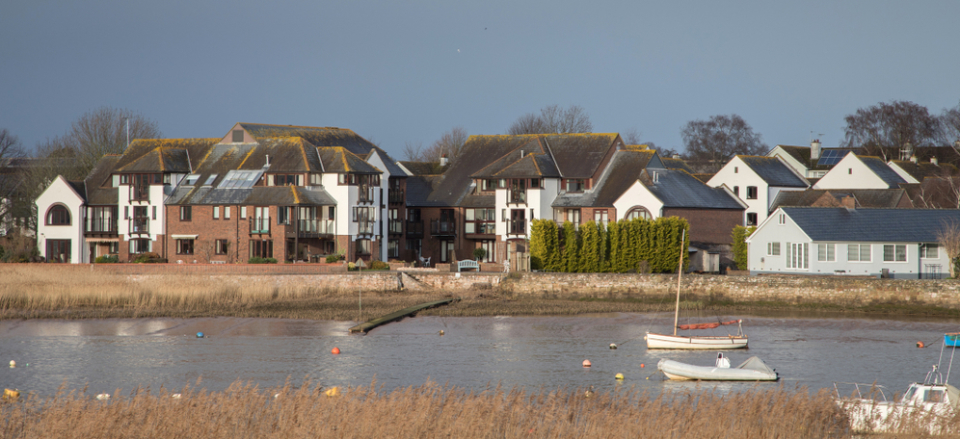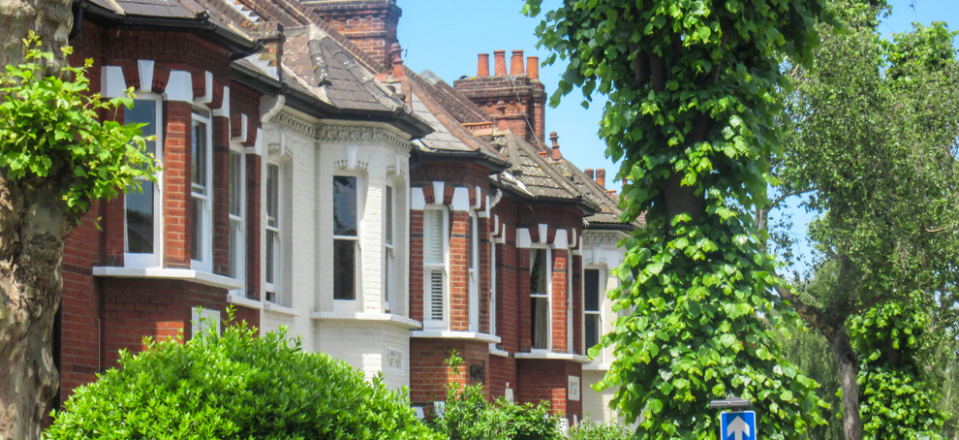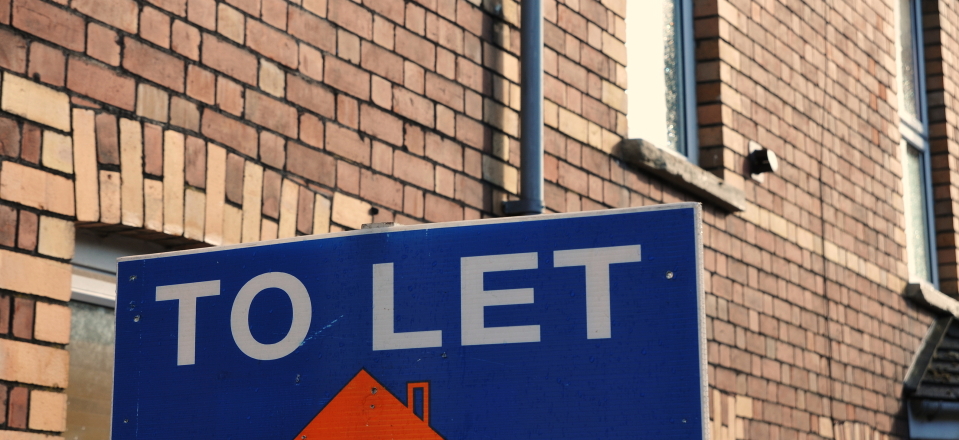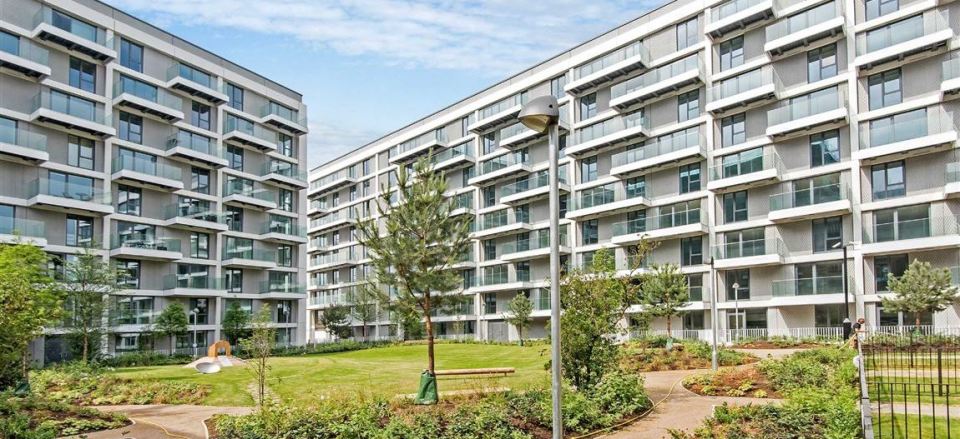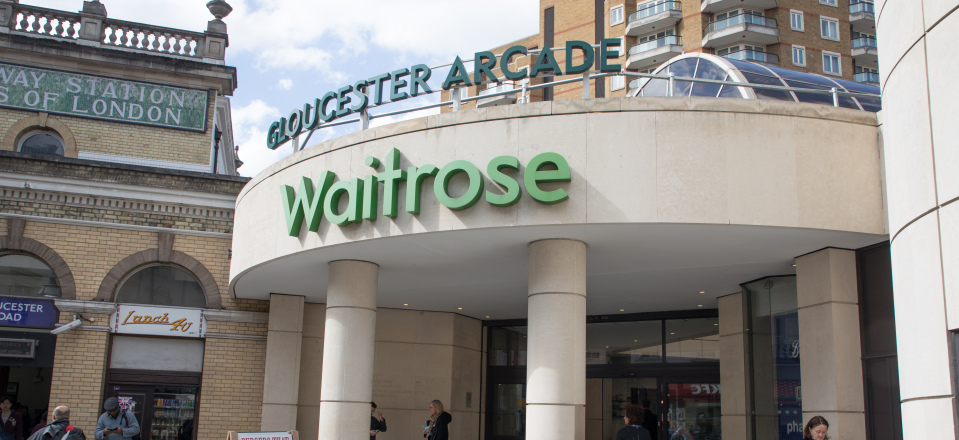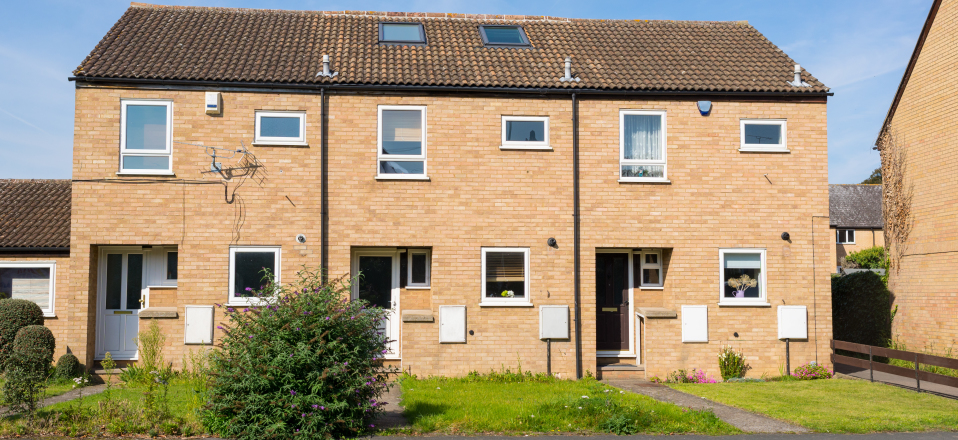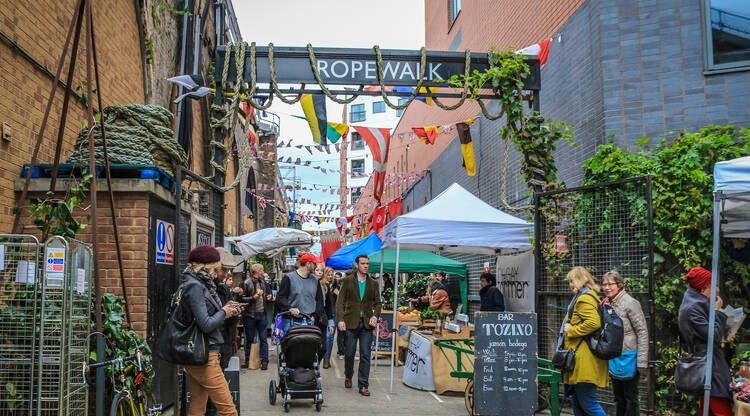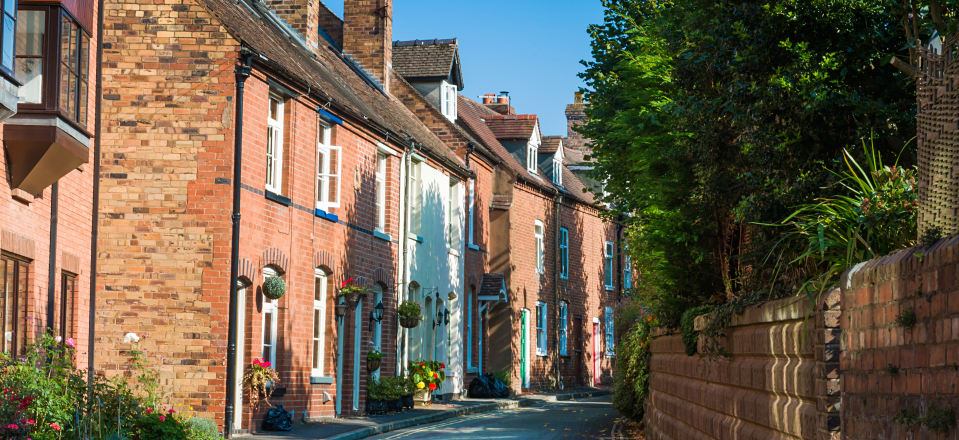House prices rise by the price of a good bottle of wine a day
The typical home saw £2,046 added to its value during the first six months of the year.
The value of the average home increased by £11 a day during the first half of 2019, adding £60 billion to the total value of the UK’s housing stock.
House prices rose by £2,046 in the six months to the end of June, but the headline figure masked significant regional variation, according to analysis by Zoopla.
The West Midlands was the best performing region, with property values jumping by an average of £36.58 a day, giving a total gain of £6,695.
But at the other end of the spectrum, house prices in London fell by £71.23 a day, wiping around £13,035 off their value during the first half of the year.
Laura Howard, spokesperson for Zoopla, said: “An increase in the total value of housing was recorded across nine of the 11 regions analysed, with average property values in the West Midlands making the most for homeowners.
Which regions have seen the strongest growth?
While the West Midlands posted the strongest house price gains during the first half, south east England was not far behind, with the typical home adding £35.32 a day to its value or a total of £6,463.
North west England saw the third strongest gains at £20.39 a day, with Yorkshire and the Humber completing the top five with homes in the region rising by an average of £12.37 a day during the first half of the year.
Regional value changes since January 2019
|
Rank |
Region |
January value (£) |
July value (£) |
£ total change |
£ change per day |
|
1 |
West Midlands |
230,676 |
237,371 |
£6,695 |
£36.58 |
|
2 |
South East England |
406,821 |
413,284 |
£6,463 |
£35.32 |
|
3 |
North West England |
198,446 |
202,177 |
£3,731 |
£20.39 |
|
4 |
Wales |
190,610 |
193,910 |
£3,300 |
£18.03 |
|
5 |
Yorkshire and The Humber |
181,918 |
184,181 |
£2,263 |
£12.37 |
|
6 |
East of England |
360,707 |
362,823 |
£2,116 |
£11.56 |
|
7 |
East Midlands |
224,352 |
226,177 |
£1,825 |
£9.97 |
|
8 |
North East England |
192,388 |
193,663 |
£1,275 |
£6.97 |
|
9 |
South West England |
309,333 |
310,165 |
£832 |
£4.55 |
|
10 |
Scotland |
194,942 |
191,174 |
-£3,768 |
-£20.59 |
|
11 |
London |
670,535 |
657,500 |
-£13,035 |
-£71.23 |
Where is the housing market slower?
Alongside London, Scotland was the only other region to see house price falls in the first half of 2019, with properties north of the border losing an average of £20.59 of their value each day.
Meanwhile, growth was subdued in the South West, with house prices rising by just £4.55 a day or a total of £832 during the first six months, and the North East, where property values rose by £6.97 a day.
Despite the price falls, London continues to have the most expensive homes by some margin, with the average property costing £657,500, followed by the south east of England at £413,284.
What about individual towns?
In terms of individual towns, properties in Berkhamsted enjoyed the largest gains at an average of £185.11 a day, adding a massive £33,875 to their value during the first half of the year.
Reigate was not far behind with house prices in the town rising by £184.28 a day, followed by Epping at £178.45 a day.
In London, Notting Hill and Holland Park saw the fastest house price rises at £141.46 a day.
By contrast, the biggest losses were recorded in Hampstead, Belsize Park and Swiss Cottage, where house prices slipped by an average of £179.28 a day, and Leatherhead at £141.46 per day.
Top 10 post towns for value increases since January 2019
|
Rank |
Town |
January value (£) |
July value (£) |
£ total change |
£ change per day |
|
|
1 |
Berkhamsted |
683,356 |
717,231 |
£33,875 |
£185.11 |
|
|
2 |
Reigate |
583,392 |
617,115 |
£33,723 |
£184.28 |
|
|
3 |
Epping |
593,587 |
626,244 |
£32,657 |
£178.45 |
|
|
4 |
Billericay |
523,326 |
554,625 |
£31,299 |
£171.03 |
|
|
5 |
Winchester |
537,660 |
568,681 |
£31,021 |
£169.51 |
|
|
6 |
Bushey |
565,030 |
593,849 |
£28,819 |
£157.48 |
|
|
7 |
Ware |
462,779 |
489,563 |
£26,784 |
£146.36 |
|
|
8 |
Godalming |
593,181 |
619,963 |
£26,782 |
£146.35 |
|
|
9 |
Uckfield |
440,467 |
464,636 |
£24,169 |
£132.07 |
|
|
10 |
Waltham Cross |
399,642 |
423,025 |
£23,383 |
£127.78 |
|
Top 3 takeaways
-
The value of the average home increased by £11 a day during the first half of 2019 adding £60 billion to the total value of the UK’s housing stock
-
The West Midlands was the best performing region, with property values jumping by an average of £36.58 a day
-
House prices in London fell by £71.23 a day, wiping around £13,035 off their value during the first half of the year
Number of company landlords reaches highest level for eight years
More than one in 10 rental properties are now owned by a company as tax changes make private landlords feel the pinch.
Tenants are now more likely to be renting their home from a company landlord, as opposed to a private landlord, than at any time in the past eight years.
Firms now let more than one in ten properties, the highest level since 2011 and up 9% from 2015 when tax changes for private landlords were announced, according to research from Hamptons International.
This means company landlords own 641,480 buy-to-let homes in Great Britain, 42% more than four years ago, with London landlords the most likely to own a buy-to-let using a company structure.
The average cost of a new let in Great Britain also rose to £986 pcm in June, a 3.1% year-on-year increase driven by rising rents in the South.
Table 1 – Percentage and estimated number of homes let by company landlords in GB
| Year | % of homes let by company landlords | Estimated number of homes let by company landlords |
| 2008 | 14% | 456,260 |
| 2009 | 13% | 449,900 |
| 2010 | 14% | 524,540 |
| 2011 | 12% | 481,780 |
| 2012 | 10% | 443,740 |
| 2013 | 10% | 448,080 |
| 2014 | 9% | 449,260 |
| 2015 | 9% | 452,600 |
| 2016 | 9% | 458,280 |
| 2017 | 10% | 535,330 |
| 2018 | 10% | 537,060 |
| 2019 H1 | 12% | 641,480 |
Source: Hamptons International & EHS
Why is this happening?
Tapering of mortgage interest tax relief for non-company landlords was introduced in April 2017.
Previously, private landlords could deduct both mortgage interest and other costs associated with a let property from their rental income before calculating how much tax was due.
But new regulations stated the amount of mortgage interest individual landlords could write off for tax purposes would drop by 25% each year.
By next year all rent must be declared as income. They are then taxed on total income and need to claim back 20% as a credit.
Buy-to-lets owned by a limited company are taxed differently and the changes to the tapering of mortgage interest tax relief do not apply.
Company landlords are viewed as businesses, with expenses written off for tax purposes, including mortgage interest payments.
But there are other costs associated with owning a property through a limited company. For example, mortgage costs tend to be higher and landlords have to take their income in the form of a dividend. Company landlords also pay corporation tax rather than income tax.
The sector has also been hit by the introduction of a 3% Stamp Duty Land Tax on second property purchases.
This has led to a surcharge of thousands of pounds on property and forced many private landlords to rethink extending their portfolios.
Who does it affect?
The mix of landlords continues to sway towards companies from private individuals, but how this affects the tenants differs from case to case.
What the research does show is that demand in certain locations is increasing for rental properties and this is pushing up the cost of renting. The South West recorded the strongest rental growth, with rents rising 4.5% annually.
Aneisha Beveridge, Head of Research at Hamptons International, said: “Increasing taxation for private landlords combined with the growth of the build-to-rent sector has meant that more companies are letting homes than at any time since our records began.
“London, where landlords tend to have higher levels of debt and often the most to gain from corporate ownership, has the largest proportion of homes let by a company.
“However, it’s not always more profitable to put a buy-to-let into a company as other associated costs come into play.
“Strong rents in the South drove rental growth in Great Britain in June. Low stock levels, particularly in the South, continue to put pressure on rents.”
Renters will be able to check on landlord’s background
The Government has unveiled plans to make its rogue landlords list open access.
Prospective tenants could soon check out be able who they are renting from if new government proposals come to pass.
The plan is for a database of rogue landlords, charting misdemeanours such as being banned for failing to provide habitable homes, would be opened up to those looking to rent.
The current Rogue Landlords Database is only open to local authorities and since launch last year, has only registered 10 names.
The initial proposals would only apply in England because of devolved housing policy.
"This database has the potential to ensure that poor quality homes across the country are improved and the worst landlords are banned,” said Communities Secretary James Brokenshire.
“It is right that we unlock this crucial information for new and prospective tenants. Landlords should be in no doubt that they must provide decent homes or face the consequences."
There are now more than four-and-a-half million households renting in England, with house prices out of reach for first time buyers being cited as a key reason for the rise.
A 12-week consultation on the plans will also consider whether to widen the scope of the rogue landlords list to more housing-related offences, such as breaching the Tenant Fees Act.
The rental market has been in the spotlight for reform in recent months with pressure to end no-fault evictions, which allow landlords to get rid of tenants without a reason after their fixed-term tenancy period has ended.
Landlords exit buy-to-let as 120,000 properties are sold
The increase in landlords leaving the sector since the Government imposed tax hikes are thought to have contributed to the fastest rent rises in 18 months.
More than 120,000 buy-to-let properties are thought to have been sold by landlords since the Government imposed higher taxes on the sector.
Analysis of UK Finance data by Savills found that 120,000 buy-to-let mortgages have been redeemed in the past two years.
The group blamed the situation on the raft of tax changes and new regulations introduced in the past three years which has made the sector significantly less attractive for individual investors.
The research comes as figures from the Office for National Statistics showed rents climbed at their fastest rate for 18 months in May.
The average cost of letting a home increased by 1.3% year-on-year, the biggest annual jump since November 2017.
Property commentators have warned that a mismatch between supply and demand is being created as landlords reduce their portfolios or exit the sector altogether, putting upward pressure on rents.
Investors are also thought to be hiking their rates in response to the higher costs they now face.
Why is this happening?
The Government has introduced a number of tax and regulatory changes to the buy-to-let sector which makes it significantly less profitable.
Among the changes are a 3% stamp duty surcharge on the purchase of additional properties, introduced in April 2016, a tapering of mortgage interest tax relief and an end to the ‘wear and tear’ allowance.
Other changes include a ban on charging fees to tenants, a limit on the amount tenants can be charged to repair minor damage to properties, and a requirement for more landlords to upgrade their properties to make them energy efficient.
Who does it affect?
The situation is bad news for both landlords and tenants.
As a result of the subdued state of the housing market, buy-to-let investors are no longer making significant capital gains on their portfolios, meaning they have less incentive to hold on to rental properties on which they are only breaking even or incurring a slight loss.
As a result, many are selling up. This means there are fewer homes available to rent, which is, in turn, pushing up the cost of being a tenant.
However, first-time buyers, who no longer have to compete against landlords for properties at the bottom of the housing ladder, could benefit.
What’s the background?
With private landlords exiting the sector, Savills is predicting ‘build to rent’ investors will step in and fill the void.
The properties are high quality and professionally managed homes that have been built specifically for renters. They have corporate landlords and longer tenancies, as well as a typically offering a range of extra facilities.
While there are currently only 30,000 build to rent homes that have been completed, with another 110,000 in the pipeline, Savills estimates there could be 1.7 million homes when the sector reaches maturity, accounting for more than a third of the private rented market.
Flat prices fall as first-time buyers shun starter homes
People purchasing their first home appear to be aiming higher up the property ladder
The price of flats is falling as first-time buyers leapfrog their way on to the second rung of the property ladder.
The average cost of a flat fell by 1.6% in the year to the end of April to stand at £199,018, according to the Land Registry.
By contrast all other property types increased in value, with detached houses seeing the biggest year-on-year gain of 2.7%, followed by semi-detached homes at 2% and terraced properties at 1.9%.
Property commentators attribute the trend to first-time buyers delaying the purchase of their first home, then buying a more expensive property further up the ladder when they do take the plunge.
There is also the suggestion that while young people are quite happy to rent a flat, they do not necessarily want to buy one.
Why is this happening?
Some of the fall in the price of flats can be attributed to the current absence of buy-to-let investors in the market.
But this trend has been playing out over the past two years, following a raft of government tax hikes that made the sector less profitable, and it is unlikely to account for all of the fall.
Instead, it is thought that first-time buyers who traditionally compete with investment landlords for homes at the bottom of the property ladder are also shunning flats.
With the average age at which people purchase their first home increasing, many are instead thought to be jumping straight to properties that would be suitable for a young family.
Who does it affect?
Reducing the number of steps they take on the property ladder is a smart move for first-time buyers.
The typical move involving a house purchase costs £12,000, according to Lloyds Bank.
At the same time, while first-time buyers are exempt from stamp duty on the first £300,000 of a property purchase, this tax break does not apply to those trading up the ladder.
As a result, delaying the purchase of a home until they can afford an average priced semi-detached house costing £216,938, will save first-time buyers £1,838.76 in stamp duty.
What’s the background?
One of the reasons first-time buyers are able to leapfrog a rung of the housing ladder is likely to be due to the range of initiative’s available to help them purchase a home.
Under the Help to Buy equity loan scheme, people can purchase a new-build property with just a 5% deposit, with the Government topping this up with a five-year interest-free loan.
With the typical semi-detached home costing 9% more than a flat, this loan would be enough in many areas of the UK to enable first-time buyers to purchase something higher up the ladder.
The Shared Ownership scheme, under which people can buy a share in a property of between 25% to 75% and rent the rest, also enables young people to afford to buy larger properties.
‘Waitrose Effect’ home comes with a 538% premium
The supermarket chain’s impact on local prices can be debated, but there’s no denying that property near its stores sells far above the national average.
Properties in the wider postcode area of a Waitrose store in the UK sell on average for £1,220,296 – almost £1m above the average of £227,001 spent on a home in the rest of the UK.
Homes within quarter-of-a-mile mile of a Waitrose store also sell for £469,933 on average, according to research into Land Registry house sale numbers from Property Solvers.
The eye-watering premiums underline how having Waitrose as your local supermarket is often a clear indication of living in an expensive area.
While this fact may not be a surprise, the marked difference in average prices is noteworthy.
But whether homeowners hit the property price jackpot if Waitrose gains permission for a new store in their neighbourhood, is less clear.
Those believing in the ‘Waitrose effect’ might argue that when the supermarket opens a new branch, homes in the local area see their worth jump.
Others will contest that it’s merely a reflection of the supermarket chain moving in on already expensive areas which they think will be ripe for customers.
The research took the average values of 24,874 property sales over the last two years within a quarter-of-a-mile of stores across the country.
Thirty-six stores were excluded because of no nearby residential property, such as Little Waitrose stores that adjoin petrol stations and those as part of large shopping centres where property is almost exclusively commercial.
There were also areas where no residential properties within a quarter-of-a-mile radius were sold in the last two years. This left a total of 315 stores.
The sale price data of homes near stores was then compared to the average sold property prices within the same postcode area.
The data also found that just 19.4% of properties close to a Waitrose store are under the UK national average, and this drops to only 3.2% of properties in the wider postcode area.
The cheapest properties located close to a Waitrose store were found in Wolverhampton (WV2), Preston (PR5), Sheffield (S11), Northumberland (NE46)
and Northwich (CW9).
The most expensive properties located close to a Waitrose store were found in Central London in Belgravia (SW1X), Marylebone (W1U), Knightsbridge (SW3), Kings Road (SW3) and Notting Hill Gate (W11).
Developers to be banned from building tiny homes
The Prime Minister has pledged to introduce new mandatory design regulations setting out clear standards for new-build properties.
The Prime Minister has pledged to ban property developers from building tiny homes with inadequate storage space.
Theresa May is calling for the introduction of mandatory design regulations which set out clear national standards for new-build homes.
She warned that the current lack of universal standards was encouraging a 'race to the bottom' among developers.
Speaking at the Chartered Institute of Housing’s conference, she said: “I cannot accept a system in which owners and tenants are forced to accept tiny homes with inadequate storage.
“Where developers feel the need to fill show homes with deceptively small furniture and where the lack of universal standards encourages a race to the bottom.”
Why is this happening?
A ‘nationally described space standard’, which sets out detailed guidance on the minimum size of new homes, was introduced in 2015.
But the standard is not mandatory and not all local authorities insist on it being adhered to as a condition of granting planning permission.
As a result, some developers have been reducing the size of both properties and individual rooms in order to squeeze in as many units as possible on to a plot of land.
May warned the situation had led to an uneven playing field with different rules in different parts of the country leaving buyers and tenants facing a 'postcode lottery'.
Who does it affect?
The move is good news for people who want to purchase a new-build home as it should ensure developers meet minimum standards on space and design.
People using the Government’s Help to Buy equity loan scheme will be particular beneficiaries as they are limited to purchasing a new build property under the terms of the scheme.
But the move could lead to higher property prices, as if developers find they are not able to build as many units on plots of land as they had previously anticipated, they are likely to pass on this cost to buyers.
Given the length of time between when planning permission is granted and when new homes become available, it could also be some time before any change in the rules benefit consumers.
What’s the background?
May also used the conference to confirm the Government was pressing ahead with plans to end no-fault evictions, under which landlords can evict tenants with just eight weeks’ notice, and it would be publishing a consultation paper on the issue shortly.
She also revealed that by this autumn a million new homes would have been created in less than five years.
She said the Government’s reforms, including its £5.5 billion housing infrastructure fund and giving local authorities greater freedom to use brownfield sites, had made it easier for homes to be built in the right places.
But while the increase in the number of new properties being built is good news, the figure is still below the estimated range of between 240,000 to 340,000 new homes that are needed every year just to keep pace with demand.
Top 3 takeaways
- The Prime Minister has pledged to ban property developers from building tiny homes with inadequate storage space
- Theresa May is calling for the introduction of mandatory design regulations which set out clear national standards for new-build homes
- She warned that the current lack of universal standards was encouraging a race to the bottom.
The best markets in London
From the famous Borough Market to antiques fest Portobello Road, here’s our pick of the best stalls in town to pick up food, flowers, fashion and a whole lot more
Markets have been a central part of London life for centuries. Historically, they were a cornerstone of the community and the best place to go for the weekly shop. Of course, shopping habits have changed since then. The boom in supermarkets may have dented the market’s popularity in the past, but thanks to a diversified offering and renewed support, both locals and tourists continue to flock to markets around the capital. Nowadays, there’s a huge range of markets across London, from farmers markets and fashion markets to street food, vintage and antique markets. But if you’re only in town for a quick visit, any one of these are worth making a beeline for. Here’s our pick of the very best markets in London, from Borough Market’s foodie stands to stalls filled with flowers on Columbia Road.
1. Columbia Road Flower Market
Situated just off Shoreditch’s main drag, this weekly flower market is an East End gem. Every Sunday from 8am-3pm, the picturesque cobbled street is packed with traders selling bulbs, herbs, shrubs, bedding plants and bucketfuls of cut flowers. Flanking the stands are around 60 interesting independent shops and cafés, many open only at weekends. Arrive super-early for the best selection of flowers, or as the market’s winding down to bag a bargain. In between, it gets very busy indeed.
-------------------------
2. Borough Market
South Bank
Nestled next to London Bridge, this iconic food market has existed in some form since at least 1014. Though it still operates as a wholesale market in the early hours, it’s now best known as a foodie’s paradise where discerning Londoners come to buy top-quality meats, fish, fruit and veg, fresh-baked bread, cakes and sweet treats, oils and vinegars, and pretty much anything else they desire. There’s also an amazing array of street food, and a dedicated covered area to chow down in. Borough Market is open Monday to Saturday, but you’ll find the full selection of stalls from Wednesday to Saturday. It gets hella busy, so arrive bright and early to enjoy a more peaceful peruse.
-------------------------
3. Broadway Market
South Hackney
Since being relaunched in 2004, this Hackney street market has become a magnet for hipsters. Every Saturday from 9am to 5pm, it’s packed with arty students and East End creative types who come to fill their tote bags with organic groceries, vintage clothes, fresh flowers, coffee, books and unusual handmade gifts. Broadway Market has so many street food options, it’s practically impossible to go hungry here, though not everyone will have the stomach for a Yorkshire Burrito. The only downside is how busy its gets, especially on sunny Saturdays, so arrive early to beat the hordes.
-------------------------
4. Old Spitalfields Market
Spitalfields
Following its noughties rejuvenation, this covered market opposite Liverpool Street station has blossomed into a major shopping destination. Now open seven days a week, the central concourse is filled with stalls selling contemporary and vintage clothes, bespoke children’s toys, home items and artisan food products. Inside, you’ll also find a decent selection of permanent retail outlets and restaurants including popular chains The Real Greek and Las Iguanas. There’s extra buzz on Thursdays, when it welcomes Old Spitalfields Antiques Market, a bonus cluster of stalls offering collectables and objets d’art from 8am to 5pm. And if you’re still not shopped out, Brick Lane Market is a quick five-minute walk away.
-------------------------
5. Greenwich Market
Though it’s situated in historic Greenwich (in a World Heritage Site, no less), this eighteenth-century indoor market is no relic. Open Tuesday to Sunday from 10am-5.30pm, it’s home to around 120 stalls selling jewellery, clothes, second-hand furniture, interesting gifts and general bric-a-brac. On Tuesday and Thursday you’ll find more antique stalls; other days have a greater arts and crafts presence. Once you’ve refuelled at one of 40 food and drink stalls, you can pay a visit to the nearby Cutty Sark or Royal Observatory. Or just hop on a Thames riverboat back to central London.
-------------------------
6. Portobello Road Market
Portobello Road
The world’s largest antiques market occupies a prime stretch of Notting Hill, an area that manages to feel diverse and surprising despite heavy gentrification (how Hugh Grant in that movie could afford a one-person flatshare despite working in a bookshop is beyond us) in the ’90s. Portobello Road Market is really five markets in one, with different sections dedicated to second-hand goods; clothing and fashion; household essentials; fruit, veg and other food; and the main event: antiques. You’ll find the greatest range of antiques stalls on Saturdays, when the market gets so busy that it’s wise to arrive before 11am. Portobello buzzes on Fridays too, but this fascinating street packed with characterful cafés, shops and drinking spots is worth a visit any time.
-------------------------
7. Brixton Village and Market Row
Brixton
Brixton is one of the capital’s most vibrant and culturally diverse neighbourhoods, and these adjacent indoor markets reflect its unique and varied flavour. In recent years, they’ve become a gourmet destination where hungry Londoners can grab a table at places serving seafood, superior pizza, Portuguese cuisine, Mexican food, Jamaican/European fusion and all manner of Caribbean delicacies. But they contain plenty for shoppers, too. A leisurely amble through the arcades reveals a treasure trove of independent outlets selling clothing, jewellery, homeware, art, antiques and unusual gifts. Brixton Village and Market Row are open from 8am to 11.30pm every day, except for Monday, when they close early at 6pm.
-------------------------
8. Covent Garden Market
Covent Garden
his grand neoclassical building in the heart of Covent Garden is a London landmark. Since 1980, after traffic congestion forced the traditional fruit-and-veg market to relocate, Covent Garden Market has reinvented itself as a serious shopping destination. On Mondays, it’s filled with stalls selling antiques and collectables; then from Tuesday to Sunday, it welcomes a broader range of traders offering everything from handmade jewellery to artisan soaps. There are plenty of permanent retail units, too, mainly housing fancy brands like Mulberry and Tom Ford. Once you’re done exploring, which could honestly take hours, Jubilee Market across the piazza is great for gifts and trinkets.
-------------------------
9. Camden Market
Camden Market
Technically several adjoining markets, this sprawl of stalls stretching from Camden Town tube to the Regent’s Canal is London’s fourth most popular visitor attraction. Every week, around 250,000 people come here to shop, sample street food and soak up the distinctive, still-grungy atmosphere. Camden Lock Market is an arts-and-crafts haven while the Stables Market is a trendy spot for everything from quirky furniture to fetish clothing. Nearby Buck Street Market on Camden High Street (the one under a sign that reads ‘The Camden Market’) is best for T-shirts and touristy trinkets. The markets in Camden Town are open seven days a week and always seem to be buzzing.
-------------------------
10. Brick Lane Market
Brick Lane
On Sundays, the streets of East London’s bustling Brick Lane are lined with stalls selling anything and everything. You’re bound to find bargain fruit and veg, household items and electrical products, but this market’s USP is its sheer unpredictability: you could bag a second-hard bargain, or spend hours sifting through trinkety tat. Brick Lane’s recent ‘trendification’ is reflected in the various splinter markets that surround it. Visit Backyard Market for arts and crafts, Sunday Upmarket for street food and interesting gifts, The Tea Rooms for vintage bric-a-brac, and the Boiler House Food Hall for more snack and drink stalls. Brick Lane’s various Sunday markets surely have something for everyone.
-------------------------
11. Alfies Antique Market
Marylebone
Housed in a huge Egyptian-style art deco building in Marylebone, Alfie’s Antiques Market has been attracting collectors and casual buyers alike for more than 40 years. Spread over four floors you’ll find around 100 different dealers selling an eclectic selection of jewellery, homeware, decorative items, memorabilia, furniture and artwork. Full-on bargains are few and far between, but that’s only because the quality of goods on offer is so high. Alfie’s Antiques is open 10am-6pm from Tuesday to Saturday; once you’ve found your dream objet, you can enjoy a bite and a tipple at the rooftop café, a famous sun trap.
-------------------------
12. Maltby Street Market
Bermondsey
Located in increasingly lively Bermondsey, Maltby Street Market is a bit like a calmer, more curated version of Borough Market. It’s only been going since 2010, doesn’t open during the week, and the tourists haven’t quite cottoned on yet. So, if you can’t face the masses, this is the place to come when you’re having a Nigella moment and want to stock your kitchen cupboards with high-end condiments and tipples you can’t get at Tesco. Nestled in and around the atmospheric Victorian rail arches of the Ropewalk you’ll find around 30 artisan food and drink traders selling everything from craft beer to Mozambique-style peri-peri meats.
-------------------------
Leasehold homeowners pay £447 million a year in ground rent
One in 10 people who own a leasehold property says the cost of ground rent impacts their quality of life, and a third would struggle to afford further increases.
Homeowners in leasehold properties are collectively shelling out £447 million in ground rent every year.
The average person pays £319 in the rent annually, with 9% saying the cost impacts their quality of life, according to trade body NAEA Propertymark.
More than a third of people with leasehold homes said they would no longer be able to afford to live in their property if the ground rent increased, with 6% admitting they were already struggling with the cost.
One in 10 homeowners faced a hike in rent costs since they first moved into their property, with the increase typically coming after just seven years.
Mark Hayward, chief executive at NAEA Propertymark, said: “Even though many leasehold contracts include a ‘ten-year ground-rent freeze’, most developers sell the freehold on to a third party within a few years of completion and those terms go out the window, meaning homeowners are faced with unexpected and escalating costs.”
Why is this happening?
While in the past leasehold properties tended to be restricted to flats, there has been a growing trend among developers to sell houses on a leasehold-basis as well.
Unlike a freehold property, with a leasehold one, homeowners do not own the property outright but only have the right to live there for a set period.
They also have to pay annual rent on the land on which the property sits.
A recent report by the Housing, Communities and Local Government Committee warned that people living in leasehold properties were treated as a steady source of profit by developers, freeholders and managing agents.
It added that in some cases ground rents had doubled every 10 to 15 years.
Who does it affect?
Government statistics suggest there were 4.2 million leasehold properties in England in 2015-16, two thirds of which were flats.
But the NAEA Propertymark study suggested there was a lack of understanding about leaseholds, with one in five people saying they did not understand in detail how much their ground rent could go up by, while 46% said if they had known how much it could increase they might not have purchased the property.
What’s the background?
Earlier this month, the Competition and Markets Authority launched an investigation into the leasehold property market to see if consumers were being treated fairly when they bought a home.
It plans to look into whether people who bought leasehold properties were mis-sold them and not given the information they needed to fully understand their obligations.
It will also consider whether the terms of the leaseholds are potentially unfair, with homeowners being forced to pay excessive fees.
The Government has also expressed concern about the plight of people in leasehold properties. Last year it launched a consultation on imposing a cap on ground rents for new-build leasehold homes.
It has also proposed that the majority of new-build houses should be sold as freehold.
Top 3 takeaways
-
Homeowners in leasehold properties are collectively shelling out £447 million in ground rent
-
The average person pays £319 in ground rent, with 9% saying the cost impacts their quality of life
-
More than a third of people with leasehold homes said they would no longer be able to afford to live in their property if the ground rent increased, with 6% saying they were already struggling with the cost.
Confident homeowners predict 4.8% house price growth
Homeowners in northern regions are most optimistic, while those in the south are more likely to predict falls.
Confidence in the housing market remains high with homeowners expecting property prices to increase by 4.8% in the coming six months.
Despite the recent slowdown in house price growth, 81% of people think property values will increase in their area, according to Zoopla.
But there was significant regional variation, with homeowners in Yorkshire and Humber most likely to predict further price rises at 91%, while a third of people in London expect house price falls.
Those in the northern regions tended to be more optimistic about the outlook for the housing market, while those in southern ones were most likely to expect a downturn.
Laura Howard, spokesperson for Zoopla, said: “Despite evidence of a slowing housing market and ongoing political uncertainty, homeowners remain optimistic about the future of property prices.”
Where are homeowners most optimistic?
Homeowners in Yorkshire and Humber were most likely to expect house prices to increase in the next six months at 91%, followed by those in the north west at 90.5% and people in Scotland at 90.3%.
People in Wales were also optimistic, with 89.5% anticipating further growth.
In terms of actual price growth, those in Scotland are expecting the biggest gains of 5.5% in the coming six months.
They are followed by homeowners in the north east at 5.4%, while people in the West Midlands and East Midlands think prices will rise by 5.1%.
Where do people expect to see house price falls?
Homeowners are least optimistic in London, where 32.8% predict house prices will drop during the next six months, losing an average of 6.7% of their value.
Those in the south east are also downbeat, with 26.1% expecting price falls of around 6.1%.
Despite this, there are still more people in these regions who expect the cost of property to continue rising than those who expect it to fall, with 67.2% of people in London and 73.9% of those in the south east expecting price rises.
The biggest price falls were predicting in the north west, where those who think property values will decline expect them to be 8.5% lower in six months’ time.
What’s the background?
Latest UK Cities House Price Index suggests homeowners may be too optimistic, with this showing property price growth had slowed to just 1.7% in the 12 months to the end of April across the UK as a whole.
That said, homeowners in Yorkshire and Humber who are predicting price rises of 4.5% are not too wide of the mark, with property values in Sheffield currently rising at an annual rate of 4.4%, while in Leeds annual house price inflation is running at 3.5%.
It is also no surprise that people in London are the least confident, with property values in the capital falling by an average of 0.5% during the past year.
Howard points out that even if consumers’ forecasts fail to prevail, sentiment still plays a crucial role in the health of the housing market.
She said: “A feeling of stability means buyers are more likely to start actively looking for their next home, confident that now is the right time to make a purchase. And, in turn, an active pool of buyers will encourage sellers to list their homes for sale.
“Measured confidence in the housing market is also more likely to see homes marketed at the right price which, by its nature, generates demand.”
Top 3 takeaways
- Homeowners expect property prices to increase by 4.8% in the coming six month
- 81% of people think property values will increase in their area, with people in northern regions more optimistic than those in southern ones
- Homeowners in Yorkshire and Humber are most likely to predict further price rises at 91%, while a third of people in London expect house price falls.

